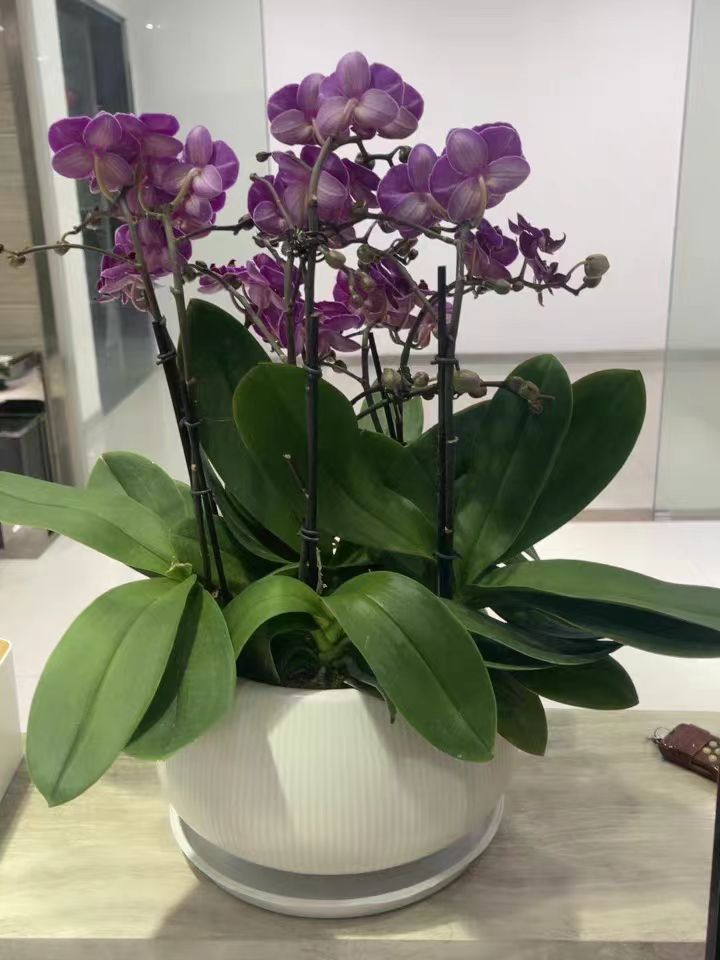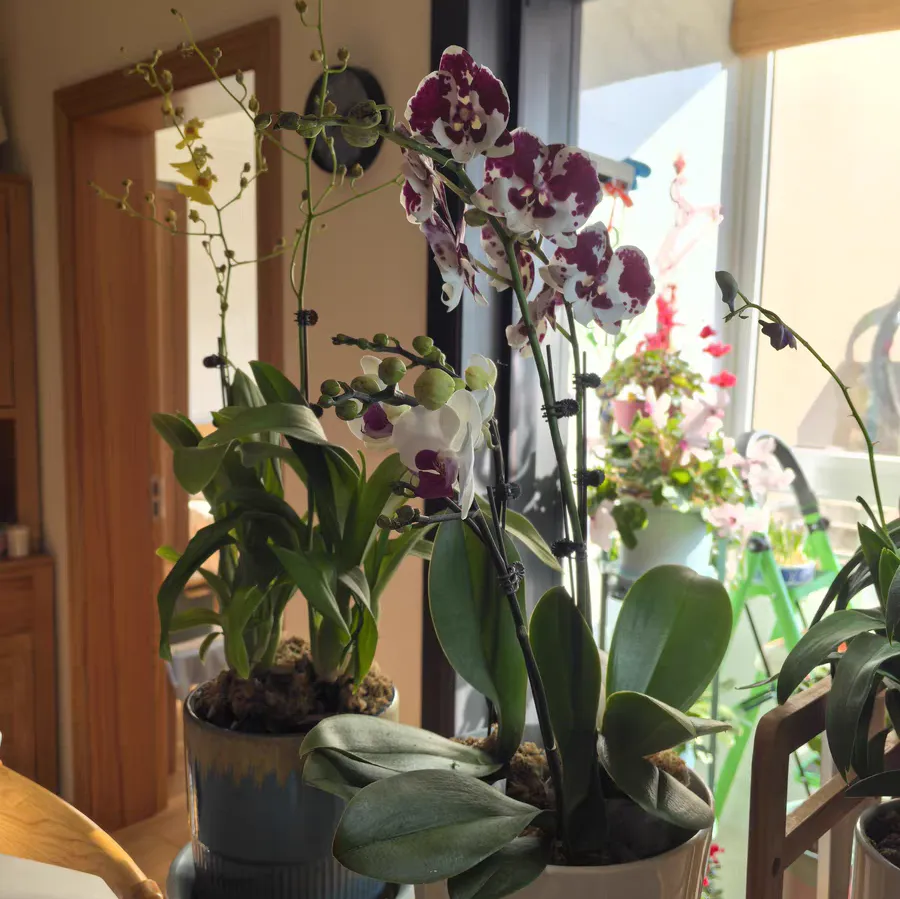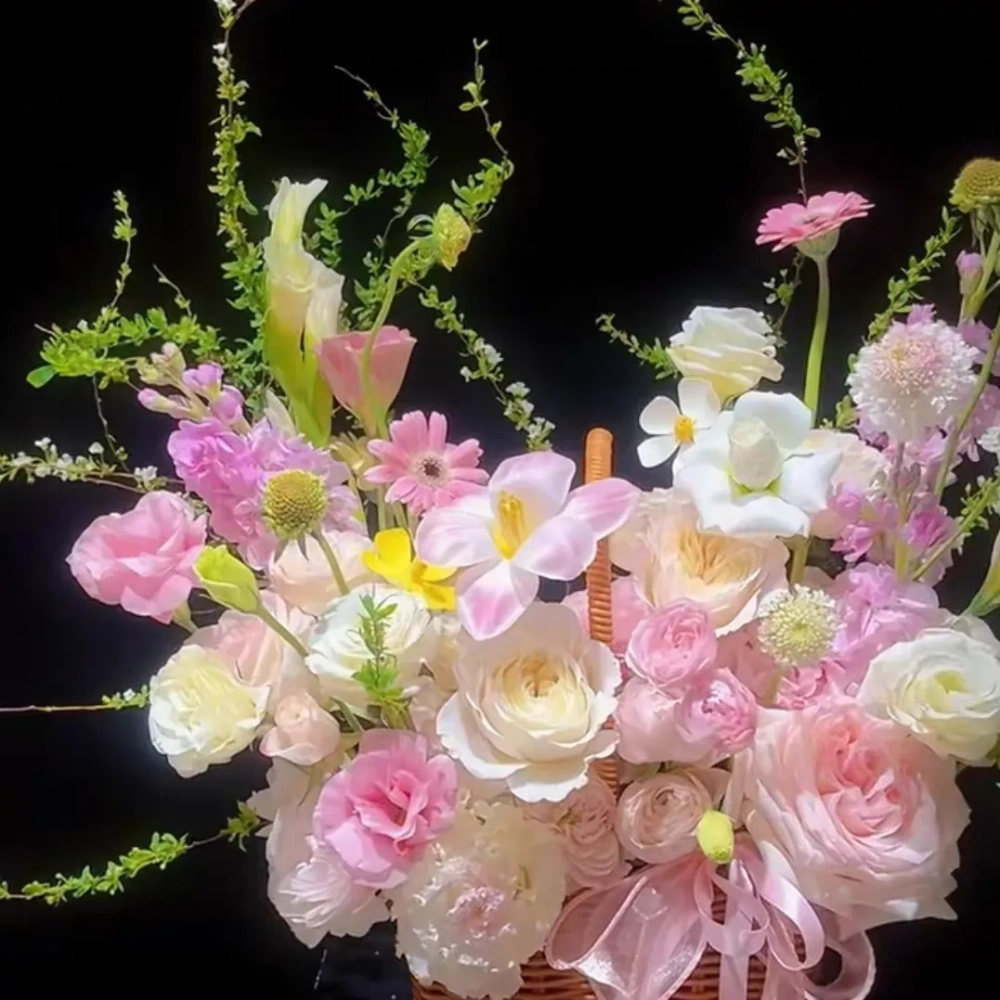During the daily maintenance of Phalaenopsis, improper watering methods, especially over - watering, can easily lead to root rot of Phalaenopsis, affecting its growth and blooming. What are the remedies for root rot caused by over - watering of Phalaenopsis?
First, when it is found that Phalaenopsis has been over - watered, immediately observe its growth condition. If the leaves become soft, droop, or even fall off, and the roots turn black, become soft, or have an unpleasant odor, these are obvious signs of root rot. Once these symptoms are detected, take immediate action to prevent the condition from worsening.
Pruning Rotten Roots:
Pot - Removal: Gently remove the Phalaenopsis from the pot to avoid damaging the healthy roots.
Root Pruning: Use disinfected scissors to carefully trim off the rotten roots. Pay attention to being thorough during pruning, ensuring that only healthy roots are retained.
Disinfection: After pruning, gently spray or smear the wounds with alcohol or carbendazim disinfectant to prevent infection.
Drying Treatment:
After pruning and disinfection, place the Phalaenopsis in a cool and ventilated place to air - dry naturally. The drying time depends on the size of the wound and the environmental humidity, usually ranging from a few hours to about one day. Avoid direct sunlight during this period, as it may prevent the wounds from healing.
Re - planting:
Substrate Selection: When re - planting, choose a substrate with good air permeability and drainage, such as sphagnum moss, bark, or coconut coir. These substrates help reduce waterlogging and the risk of root rot.
Sphagnum Moss Wrapping: If using the sphagnum - moss rooting method, ensure that the sphagnum moss is sterile and completely wrap the roots of the Phalaenopsis. Pay attention to keeping the sphagnum moss slightly moist, but avoid over - wetness to prevent root rot again.
Hanging Water - Induced Rooting: Another method is to hang the Phalaenopsis above the water surface to stimulate root growth with high humidity. However, note that the roots should not touch the water surface to prevent rotting.
Adjusting the Maintenance Environment:
Light Management: Phalaenopsis prefers a semi - shaded environment and should be placed in a location with sufficient diffused light indoors. Avoid long - term direct sunlight to prevent leaf burns. At the same time, maintain an appropriate light duration to promote photosynthesis and growth.
Temperature Regulation: The suitable growth temperature for Phalaenopsis is 15°C - 28°C. In high - temperature summers, take cooling measures such as turning on the air - conditioner or spraying water. In cold winters, move it to a warm place indoors to ensure the temperature does not drop below 10°C.
Ventilation: Maintaining a good ventilation environment helps reduce humidity and prevent the occurrence of pests and diseases. Regularly open windows for ventilation or place a fan to increase air circulation.
Reasonable Watering and Fertilizing:
Watering Principle: Follow the "water - when - dry - and - keep - moist" principle. Insert a finger or chopstick about 2 - 3 centimeters into the substrate. Water when it feels dry. Water thoroughly at one time, but avoid waterlogging. Adjust the watering frequency according to the season, temperature, and humidity.
Fertilizing Method: During the peak growth seasons (spring and autumn), apply a thin liquid fertilizer every 1 - 2 weeks. The liquid fertilizer can be a specially formulated fertilizer for orchids or a diluted, decomposed organic fertilizer. Note that the concentration should not be too high to avoid fertilizer damage. During the flower - bud differentiation period, increase the application of phosphorus - potassium fertilizers, such as potassium dihydrogen phosphate, to promote flower - bud formation and development.
Through the above steps, we can effectively remedy the problem of root rot in Phalaenopsis caused by over - watering. In daily maintenance, it is also necessary to pay attention to maintaining appropriate light, temperature, and ventilation environments, as well as reasonable watering and fertilizing, so that Phalaenopsis can thrive and bloom beautiful flowers.
What to Do if Phalaenopsis Roots Rot Due to Over - watering?

Share with
Tagged in :




Leave a Reply